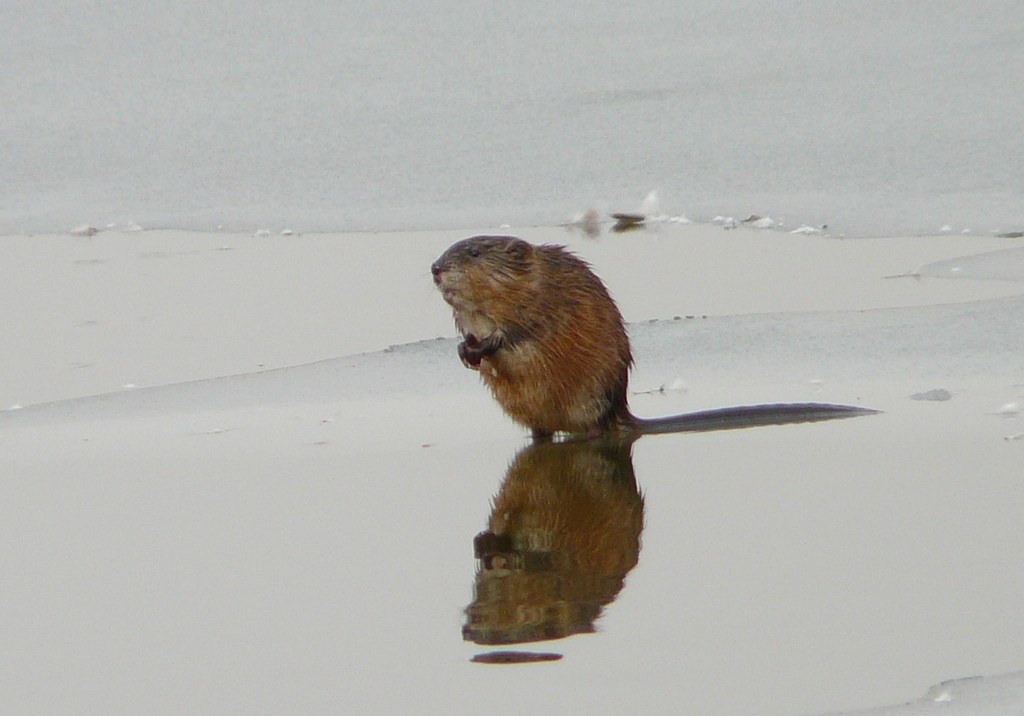Muskrat
A species of Muskrat, Also known as Common american muskrat Scientific name : Ondatra zibethicus Genus : Muskrat
Muskrat, A species of Muskrat
Also known as:
Common american muskrat
Scientific name: Ondatra zibethicus
Genus: Muskrat
Content
Description People often ask General Info
 Photo By silversea_starsong , used under CC-BY-NC-4.0 /Cropped and compressed from original
Photo By silversea_starsong , used under CC-BY-NC-4.0 /Cropped and compressed from original Description
An adult muskrat is about 40–70 cm (16–28 in) long, half of that is the tail, and weighs from 0.6–2 kg (1.3–4.4 lb). That is about four times the weight of the brown rat (Rattus norvegicus), though an adult muskrat is only slightly longer, and are almost certainly the largest and heaviest members of the diverse family Cricetidae, which includes all voles, lemmings, and most mice native to the Americas. Muskrats are much smaller than beavers (Castor canadensis), with which they often share their habitat. Muskrats are covered with short, thick fur, which is medium to dark brown or black in color, with the belly a bit lighter (countershaded); as the age increases, it turns a partly gray in color. The fur has two layers, which help protect them from the cold water. They have long tails covered with scales rather than hair, and to aid them in swimming, are slightly flattened vertically, which is a shape that is unique to them. When they walk on land, their tails drag on the ground, which makes their tracks easy to recognize. Muskrats spend most of their time in the water and are well suited for their semiaquatic life. They can swim under water for 12 to 17 minutes. Their bodies, like those of seals and whales, are less sensitive to the buildup of carbon dioxide than those of most other mammals. They can close off their ears to keep the water out. Their hind feet are semiwebbed, although in swimming, their tails are their main means of propulsion. 
People often ask
General Info
Lifespan
3-4 years
Diet
Muskrat's diet prominently features aquatic vegetation, while also demonstrating a preference for cattails and water lilies. Examining scat reveals a diet that includes freshwater mussels, fish, and small invertebrates during winter months.
Appearance
Muskrat is a medium-sized, semi-aquatic rodent with a stout body. Its dense, waterproof fur is a mix of dark brown and light brown hues. It has short legs, small eyes, and round ears. The most remarkable feature of muskrat is its long, vertically flat tail, which is mostly hairless and scaly. Males and females are similar in appearance, with comparable coloration and sizes.
Behavior
Muskrat is predominantly solitary with a semi-aquatic lifestyle. Their distinctive behavior includes burrowing along water bodies, forming complex tunnel systems. Foraging mainly at night, muskrat has a plant-based diet, but may exhibit opportunistic feeding on small invertebrates. During the breeding season, it exhibits a robust territoriality, typically aggressive in defending its domain.
Population
Stable